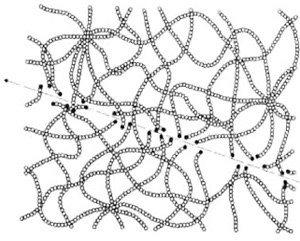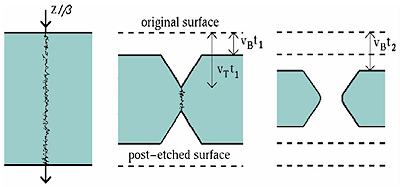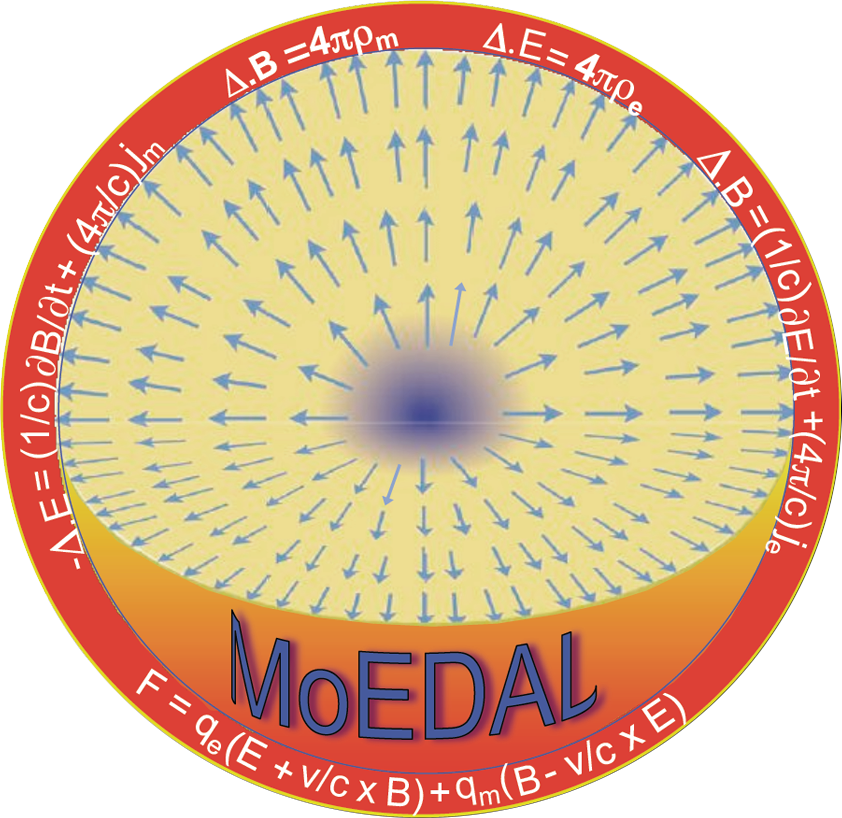
When a charged particle crosses a plastic nuclear track detector it produces damages at the level of polymeric bounds in a small cylindrical region around its trajectory forming the so-called latent track. The damage produced is dependent on the energy released inside the cylindrical region i.e. the Restricted Energy Loss (REL) which is a function of the charge Z and β= v/c (c the velocity of light in vacuum) of the incident highly ionizing particle (ion). When the velocity of the incident ion is β< 1 10−2 c the restricted energy loss is equal to the total energy loss of the particle in the medium; otherwise, only a fraction of the electronic energy loss leading to the formation of δ-rays with energies lower than a cut-off energy Tcut cut is efficient for the track formation. The REL can be computed from the Bethe-Bloch formula restricted to energy transfers T <Tcut with Tcut (< Tmax) a constant characteristic of the medium and taking into account density and shell (charge screening) corrections.
The subsequent etching of the solid nuclear detectors leads to the formation of etch-pit cones. These conical pits are usually of micrometer dimensions and can be observed with an optical microscope. Their size and shape yield information about charge, energy and direction of motion of the incident ion.

The latent track of a highly ionizing particle, such as a that of a magnetic monopole, is manifested by etching, where vB is the bulk rate and vT is the faster etch rate along the track. The damage zone is revealed as a cone shaped etch-pit, when the surface of the plastic detector is etched in a controlled manner using an etchant such as hot sodium hydroxide (NaOH) solution. In general the cone base has an elliptical form (circular if the impinging ion has a normal incidence angle). The response of the detector is given by the etching rate ratio p = vT /vB. From the measurements of the minor and major axes of the base of etch-pit cones it is possible to determine both p and the angle of incidence with respect to the detector surface.
The detectors were deployed at the Fermilab Proton-Antiproton Collider [79]. The radiation resistance dose limit obtained for CR 39 detectors with a threshold Z/β= 20, was about 2 Mrad, whereas in the case of Rodyne (equivalent to Lexan), with a threshold Z/β = 65, it is 100 times larger i.e. 200 Mrad.
Materials commonly used as solid state track etch detectors are polymers and polycarbonates such as polyallyl diglycol carbonate (PADC) also known as CR 39 with the chemical formula (C12H18O7n) or Makrofol (Lexan) with the formula (C16H14O3n). The NTD CR 39 has the lowest threshold (Z/ β = 5). This property also renders it sensitive to background radiation. In order to improve the signal to noise ratio one can increase the threshold Co-polymerizing CR39 and an additive resin such as Dioctyl Phtalate DOP or Diallyl Phtalate DAP and/or choosing a strong etching procedure as defined in [99]. CR 39 can also be combined with other track etch detectors with larger thresholds (Lexan, Makrofol) as was done for the MACRO SLIM , MODAL and MoEDAL experiments.
